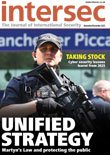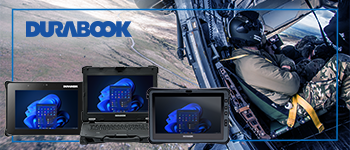A nuclear Trojan horse?
Jeanne McKinney considers how realistic a terrorist nuclear attack really is
Terrorists operate to kill as many people as possible with one strike. Whether it be a suicide vest, vehicular-borne bombs, using commercial jets as missiles, exploding a bomb from a small boat alongside a ship, or synchronised ground massacres, none are as powerful as a nuclear warhead. al-Qaeda, known for its ‘innovative’ use of lethality to cause mass casualties, has sought using nuclear weapons for years, threatening the existence of humanity itself.
The Bulletin of the Atomic Scientists reported in early 2002: “the CIA intercepted a cryptic message from an al-Qaeda member who boasted that Osama bin Laden was planning to carry out a ‘Hiroshima’ against America.”
If al-Qaeda were to find a way for nuclear weaponisation, overcoming the engineering, acquisition of sufficient fissile materials and other steps to produce albeit crude nuclear explosives, would they likely be delivered the same way previous bombs have been delivered, by planes, trucks, ships. . . or possibly a suitcase? Would they use everyday transporters of people and goods carrying a terrorist surprise for the planet’s doom?
No one imagined al-Qaeda would fly US jets loaded with passengers into skyscraper buildings and the Pentagon full of working Americans. The third jet (United Airlines Flight 93) downed over a Pennsylvania field was believed to be going to Washington DC al-Qaeda terrorists proved to the world that nothing is off limits. One only needs to watch the FBI video of the agency’s investigation of United Flight 93 and their sights and smells of death to see the determination of hate-filled Islamic jihadists. According to FBI officials, Flight 93 inverted during the struggle between the terrorists and the heroic passengers on board trying to stop them. The final speed before the jet crashed was “near or in excess of 600 miles an hour”.
Nuclear terrorism should be on everyone’s radar. The possibility is all too real and documented in CIA intelligence collected during the Abbottabad raid after the assassination of the world’s most notorious terrorist in 2011. Years later some of the inner workings of al-Qaeda were made available.
CIA statement re: November 2017 Release of Abbottabad Compound Material:
“The Office of the Director of National Intelligence (ODNI) previously released documents from the collection on 20 May 2015, 1 March 2016, and 19 January 2017 after an interagency review spearheaded by the CIA. The releases align with ODNI initiatives for increased transparency – consistent with national security prerogatives – and the 2014 Intelligence Authorization Act…”
According to the CIA Abbottabad Collection, as many as 20 nuclear suitcases were reportedly purchased by al-Qaeda. . .
CIA, Abbottabad Compound ‘al-Qaeda has Nuclear Weapons’, released:
“In 1996 members of the Chechen Mafia purportedly sold 20 of these nuclear suitcases in Grozny to representatives of Osama bin Laden and the mujahadeen. For the weapons, bin Laden paid $30-million in cash and two tons of heroin that had been refined in his laboratories in Afghanistan.
“In 1997, Boris Yeltsin’s Assistant for National Security Affairs, General Alexander Lebed, acknowledged that 84 of some 132 such weapons were not accounted for in Russia. These weapons are miniature nuclear devices (0.1 to 1 kilotons), small enough to fit into a suitcase carried by a single individual.
“The Russian government reacted to Lebed’s claim in classic Soviet style, combining wholesale denial with efforts to discredit the messenger. US government sources have never succeeded in getting to the bottom of this matter.”
This alarming intelligence came from various US and foreign intelligence agencies and straight from al-Qaeda.
In an interview with Time magazine in December 1998, Bin Laden asserts that acquiring weapons of any type, including chemical and nuclear, is a Muslim ‘religious duty’.
In a November 2001 interview bin Laden stated: “I wish to declare that if America used chemical or nuclear weapons against us, then we may retort with chemical and nuclear weapons. We have the weapons as deterrent.” When journalist Hamid Mir asked him how he got the weapons, bin Laden told him to go to the next question. Hamid Mir, the editor of Dawn newspaper, spoke to bin Laden in an undisclosed location near Kabul. It was the first and last interview given to any journalist after the horrendous 9/11 attacks. (CIA)
Fallout from 9/11 may not have been nuclear, but the destruction has continued for years with injuries and illnesses related to rescue efforts at toxic crash sites, the personal loss of family members, the economic toll overall. Before that reverberating and shocking tragedy, since the mid-Nineties, there have been a series of dead ends tracking the efforts of al-Qaeda to obtain nuclear fissile materials like highly enriched uranium and plutonium. Even though bin Laden declared it “a duty” to acquire nuclear weapons, it is our duty to identify and destroy any nuclear materials, bomb-making facilities, and scope of terrorist nuclear weaponisation activities world-wide.
“Weeks before 9/11, Osama bin Laden and [second-in-command Ayman] al- Zawahiri met with two senior Pakistani nuclear scientists and discussed how al-Qaeda could get nuclear weapons.”
Investigations after the attacks revealed that the nuclear program reported directly to the new al-Qaeda leader al-Zawahiri, who went so far, according to Bulletin of the Atomic Scientists, to conduct “crude but sensible conventional explosive tests for the bomb program in the Afghan desert”.
In October 2021, former nuclear scientist Sultan Bashiruddin Mahmood was detained with other nuclear scientists by Pakistani authorities for questioning about a possible transfer of classified nuclear secrets to the Taliban. The fear was that the disgruntled Mahmood and colleagues could have given terrorists “know-how or become a conduit for sensitive information or items”.
Pakistan’s first plutonium producing nuclear plant at Khushab that began operating in early 1998 was designed by Mahmood who later developed ties with Mullah Mohammad Omar, the Taliban’s founder and leader. Few government comments about the Pakistan nuclear weapons program have emerged since, including the completion of a second reactor in 2010. It was Abbottabad, Pakistan where bin Laden operated his final days. It was Pakistan where Taliban fighters were trained. That has never been resolved. Afghanistan and Pakistan both harboured a most-wanted terrorist fugitive intent to obtain nuclear materials.
To date, no one has acknowledged any evidence of discovering nuclear testing sites anywhere in Afghanistan. Some experts believe al-Qaeda or the Taliban are incapable of procuring enough highly enriched uranium (HEU), let alone making the bomb and detonating it. Acquiring radioactive materials for a ‘dirty bomb’ is more plausible to some, than acquisition for an ultimate weapon of mass destruction (WMD).
But not finding the nuclear materials does not mean terrorists do not have them.
A belief, President George Bush put to action.
From the George Bush White House on Day 100 of the War on Terrorism:
“President Bush today announced the blocking of assets of Umma Tameer-e-Nau (UTN), a non-governmental organisation founded by Pakistani nuclear scientists that has provided information to Usama bin Laden and the Taliban about chemical, biological, and nuclear weapons. Today’s designation also blocks the assets of three key directors of UTN: Bashir-ud-Din Mahmood, founder of UTN and formerly the director for nuclear power at the Pakistani Atomic Energy Commission (PAEC); Abdul Majeed, a former high-ranking official at the PAEC and an expert in nuclear fuels; and SM Tufail, an industrialist.”
The spread of dirty bombs and basement nukes was addressed in the US Senate on 6 March, 2002.
“As we have all learned so tragically, terrorist organisations present a very real threat to America and are capable of the most vicious and barbaric acts. The increasing capabilities of terrorist groups and the malevolent intentions of those nations that support them combine to threaten us in ways not previously imagined.” (Prepared Statement of Senator Jesse Helms)
However, to undermine the possibility of an alliance with a nuclear producing state such as Iran or Russia is a dangerous oversight. If Iran ever develops a WMD (it is said they are near) and were to give the bomb to their terror proxies or allies, they would inevitably face retaliation from nuclear-powered nations, which spells apocalypse. Helms accused Russia of nuclear proliferation to Iran and that it must be stopped to protect US interests and allies in the Persian Gulf region.
There is also the option to steal a device and unless all nuclear powers are consistent with heavy security of their inventories, that is not unlikely. When the Soviet Union collapsed and 22,000 tactical nuclear weapons had to be moved from the now separate states of Kazakhstan, Belarus and Ukraine to Russia, it was an enormous threat to nuclear security. A slogan of the era was: “Everything was for sale”.
What is worse than facilitating nuclear proliferation in a country officially designated a State Sponsor of Terrorism? US president Barack Obama’s disastrous Iran deal widened the door to Iran’s nuclear development. This threat alone is magnitude. Yet, add in new information from letters seized from Abbottabad (now declassified) shedding light on Iran’s relationship with al-Qaeda that spans a quarter of a century and is best understood as a “tactical cooperation. . .” reports Combatting Terrorism Center at West Point.
The Hoover Institution reported ten years ago: “The new agreement lets Iran keep 6,000 centrifuges and it allows the country to continue to do its own weapons research. It is likely that it can do a lot more outside the agreement as well. In five years the agreement lifts an arms embargo and in eight years all restrictions on ballistic missiles will be lifted.”
Cities could become smouldering ruins because terrorists do not comply with international arms pacts. Even if the goal is simply to make a bigger death imprint than 9/11, it may be hard to stop it once terrorists have the materials in hand. Terrorists after all are determined to kill ‘crusader forces’.
Is nuclear terrorism really something to worry about today? Sceptics say: “not likely,” or some joke about terrorists being too backwards, stupid or not able to access highly specialised machinery or acquire HEU materials. Others, like National Defense University, say there is no graver threat than the potential use of nuclear weapons in irresponsible hands, with no fear of retaliation.
“The fear of nuclear terrorism arises from “the assumption that if terrorists can get nuclear weapons they will get them”.
“The threat to retaliate can have little effect on those for whom mass destruction is an objective, not a fear.” And the situation is only getting more grim, as the “spread of nuclear weapons to new states in the Islamic world will place tools of indiscriminate destruction closer and closer to the hands of terrorists, who will use them without fear of retaliation”.
Jeanne McKinney is an award-winning military journalist, book author and documentary filmmaker. She recently published Triumph Over the Taliban: The Untold Story of US Marines’ Courageous Fight to Save Camp Bastion (now on Amazon). McKinney also wrote, directed, and is currently producing a limited documentary series called Ronin 3: The Battle for Sangin – that follows 3rd Battalion, 5th Marines through a labyrinth of murder holes and IEDs in a heavily entrenched Taliban stronghold in 2010, on mission to restore security to the local Afghan people.









